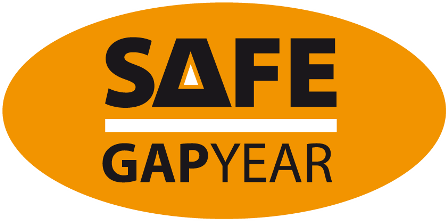It shouldn’t mean the end of large or free events, after all ‘events’ the Hajj in Saudi Arabia attracts the largest crowd in the world and this important religious ceremony must go on.
Recriminations about what happened and who was to blame for what happened at the ‘love parade’ will go on and if culpability is found to be attributable to individuals or organisations, no doubt appropriate action will be taken.
This due process has to happen and we are not in a position to pre-empt the outcome; what we can discuss however is the need for effective crowd dynamics to be put into place where a crowd of any size is anticipated.
Free-to-attend events are becoming more and more difficult to marshal as the marketing for such events changes. The era of social networking and viral marketing means that even small events can suddenly turn large on the back of a successful campaign; often without the organisers ever realising the scale.
We all strive to be successful with this type of campaign, they are cost effective and cannot be matched by traditional marketing strategies; however in certain circumstances we have seen how they can be too successful.
Planning for an event where an audience could be any size from 400 to 4000 is a difficult task. The costs involved in preparing for the worst / best case scenario can be prohibitive if only the lower end numbers show up; the fact is the possible complications when the potential variance is 400,000 to 1,400,000 is not that different, with the exception of scale.
No one should be fooled into thinking that small crowds are any less dangerous than big ones. Even in crowds of a few hundred a sudden panic can be devastating; crush injuries can seem minor on the surface, yet the internal injuries can easily be fatal.
I remember one incident at an event I was running where a can of CS-spray was released on a dance floor. There were no more that 300 people at the event, but the dance floor was busy. This type of unseen danger means that people quickly panic, their brains cannot compute what is happening and the ‘fight or flight’ instinct kicks in. In this scenario the instinct is flight, to get away from the in-comprehendible effects of the CS-spray; the fight instinct would have kicked-in if any of those inside were unable to escape.
Fortunately in our case the staff were extremely well trained and drilled in emergency evacuation procedures and their training kicked-in on command.
How effective are commands given to a panicking the public in an emergency?
‘Fight or Flight’ is not a rational response it is an emotional one, this means that instinct takes over the rational thought process and that the way people respond and interpret instructions changes as well.
In the scenario we had with the CS-spray there was little immediate sense in trying to calm people down or to explain to them that they should not panic because the effects would dissipate as quickly as it arrived; they would not have responded to this. They had already reacted with the flight reaction and the only viable thing was to assist them in achieving their instinctive objective.
Our natural instinctive reaction when we need to escape a building is to go out the way we came in. Studies have shown clearly that in the case of real emergencies people instinctively head for the entrance to leave; I have carried out hundreds of fire drills and watched as people standing right next to a fire exit, on hearing a fire alarm, head for the front door.
Fortunately in the UK many people have the knowledge ingrained in them to look for and head for an exit; but to achieve this they have to fight the natural instinct to head for the entrance and go out the way they came in. Even under pressure we can recognise the signs; the exit lights, the green ‘running-man’ signs, the difference between darker interiors and well lit exteriors and yet the vast majority of people will in a panic, look for and follow the crowd.
This knowledge should determine our strategy for training staff in how to deal with people who are panicking (even mildly) and therefore reacting rather than responding.
One of the key solutions is to get staff to provide very simple messages and for their actions to speak much loader than words (which when people are in ‘fight or flight’ mode are almost useless). The first thing our staff did when the CS-spray went off and the command was given to initiate and evacuation, was to open all the fire doors; this action removes the mental barrier about which way to go out and is a very visual sign that this is an alternative way out.
Staff should be easily identifiable (even when under stress we naturally recognise and respond to the authority we associate with for example high-visibility jackets or distinct uniforms) and get into a position where they are at eye level with customers and in a suitable lit area. Directional hand signals can be easily identified and will help move some people in the direction where the least crowded exit.
This is naturally a simplified version of all the strategies used in a successful evacuation, but emergency evacuation strategies must be simple and straight forward for customers and staff alike.
Never forget the pressure your employees are under during an evacuation and how their brains will suffer a similar change from rational to emotional; this can only be addressed by effective training and suitable practice, preferably drilled into them on a regular basis so that actions become partly instinctive.
In our scenario once people were outside they quickly calmed down naturally, as the rational part of the brain re-engages; it is at this point where a crowd becomes more controllable through more traditional communication.
What took place at the ‘love parade’ will not emerge until after a lengthy investigation, yet it seems clear from some of the pictures that a few of the channels which people took to get into the event did not provide the possibility of escape if anything sparked even a mild panic; and panic we must remember is catching and spreads like wild-fire.
This will not be the last such tragedy and we must learn from each of these events. We must teach others about what we learn; for those of us who work in event management and security it could make the difference at our next job.
Our condolences go to the family of those who tragically lost their lives in Germany.
At Beyond The Blue we deliver a number of different courses and services, which include;
• Consultancy Service (Event Management) – assists clients with the planning and execution of successful events.
• Consultancy Service (Event Security) – provides the specific skills and knowledge required to deliver safe and secure events through effective security planning.
• The National Certificate for Door Supervisors (NCDS) which provides relevant information for anyone assuming the position of DPS in licensed premises.
• Conflict Management and Resolution training provides the knowledge to help employees understand and deal proactively with Workplace Violence.
Please visit our website at http://www.btbl.co.uk/.
For more information on any of our services, please call us on 0845 602 55 95 or Contact Us.
To view the original article Click Here
To view the article on the Safe Gap Year website Click Here
Source – www.bbc.co.uk
Date – 25th July 2010
Submitted by – Peter Mayhew





No comments:
Post a Comment